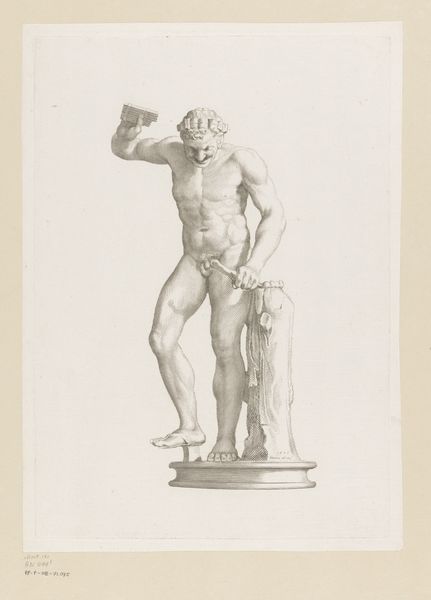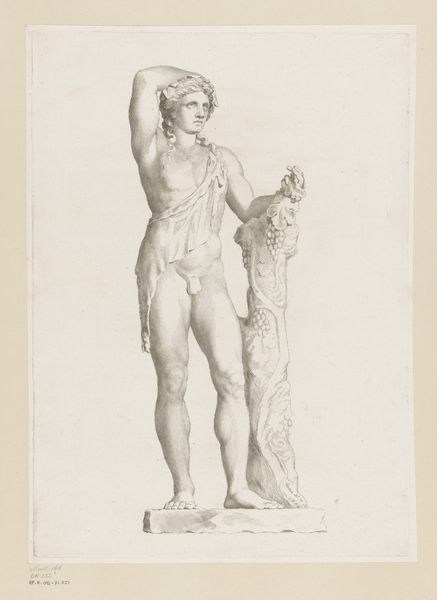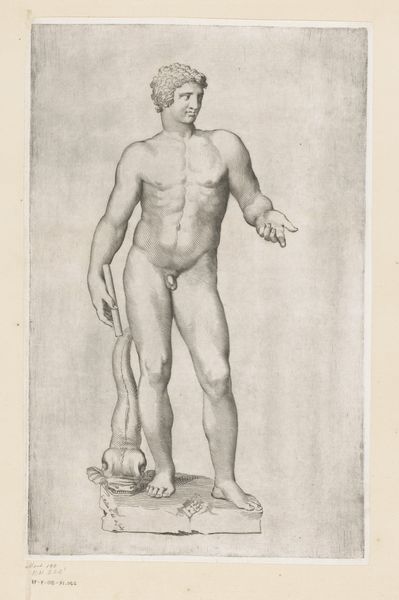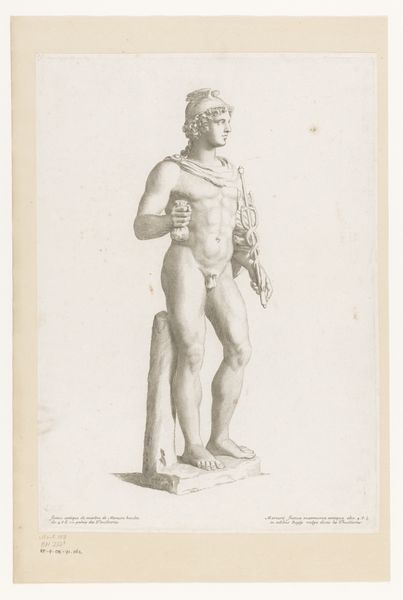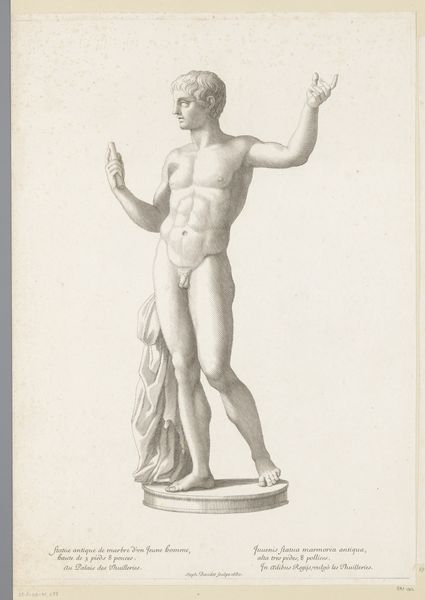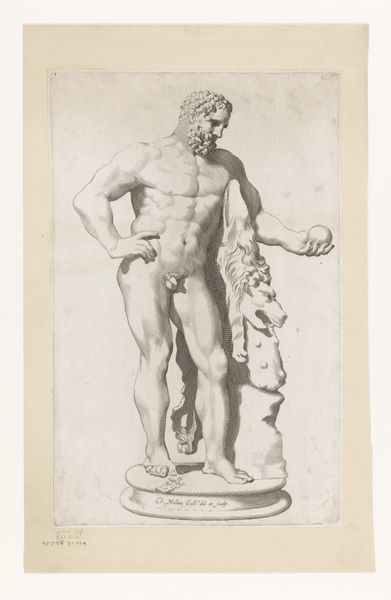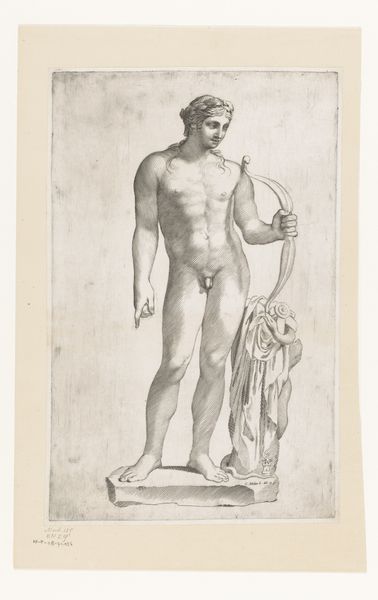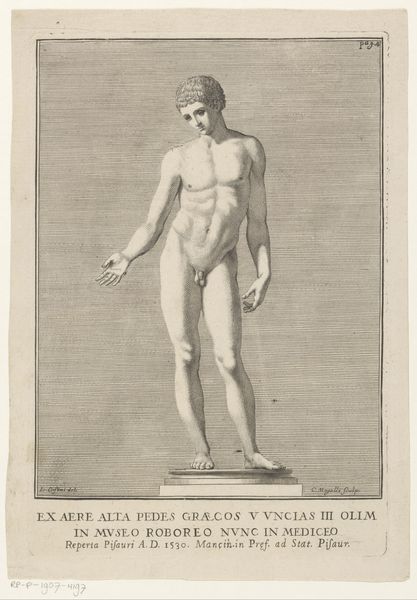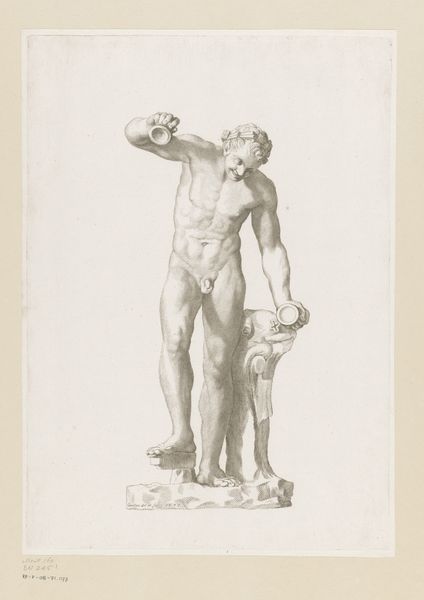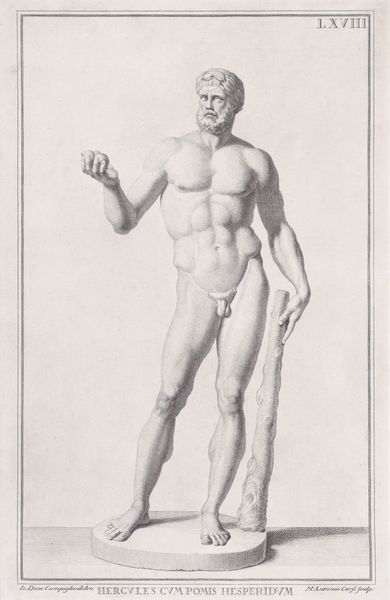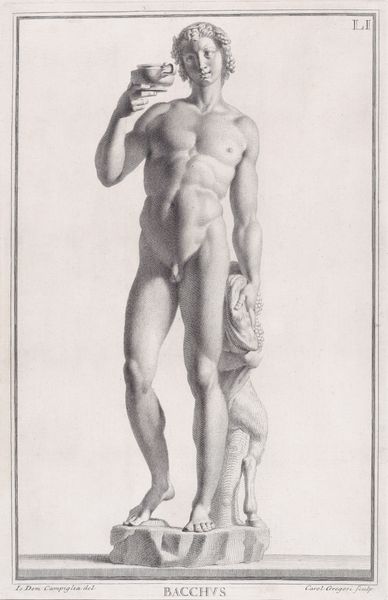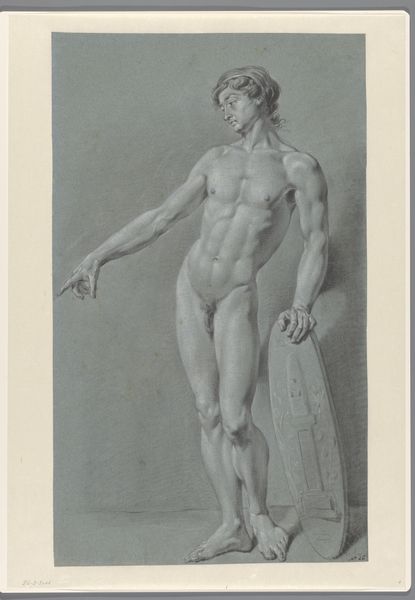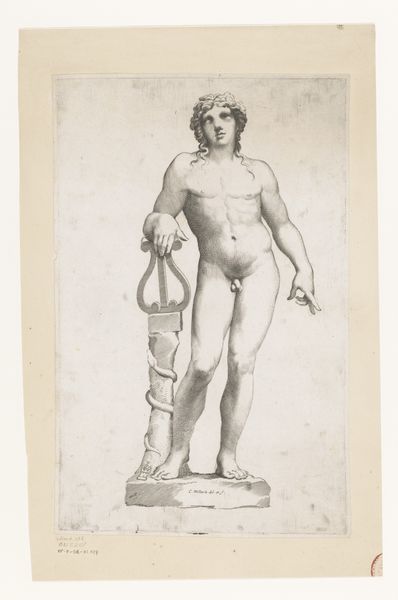
drawing, paper, pencil
#
portrait
#
drawing
#
baroque
#
classical-realism
#
figuration
#
paper
#
pencil
#
academic-art
#
nude
Dimensions: height 403 mm, width 287 mm
Copyright: Rijks Museum: Open Domain
Curator: A first impression—there’s an almost haunting quality to this rendering of a nude youth. It’s remarkably rendered in pencil and paper. Editor: You’ve just described the 17th-century drawing, "Statue of a Naked Young Man," produced somewhere between 1660 and 1677 by Claude Mellan, here on display at the Rijksmuseum. As a classically rendered baroque drawing, it really speaks to its period of production and consumption. Curator: The contrast feels muted but masterful. Look how the light delicately traces the contours of the subject's body. It reminds me of Ingres, a study of pure form. It feels classical, almost academically realist. Editor: That’s accurate. Mellan and his work existed in an ecosystem of studios, royal patronage, and developing art markets, specifically in France. Such a rendering would not only serve as a study of idealized forms, but as a political signal through classicism, referencing the Roman Republic to legitimize French political authority and its association with law, reason, and civility. Curator: The figure, however, also emanates sensuality. It goes beyond mere technical virtuosity; it is emotionally charged, as any depiction of nudity generally carries. Is this youth wistful or yearning? Editor: His ambiguity is, in my view, deliberately cultivated and carefully presented to a public that would scrutinize representations of political power but also the power of aesthetics. And, perhaps, the sensuality to which you alluded became more widespread due to increased opportunities for both public and private viewership afforded by the medium of drawing. Curator: Very true, and thinking of that, what was your biggest takeaway from this artwork? Editor: For me, it reinforces the enduring impact of socio-political contexts in shaping our engagement with idealized beauty. And you? Curator: Its subtle emotional power, amplified by the artist's masterful technique and its aesthetic beauty.
Comments
No comments
Be the first to comment and join the conversation on the ultimate creative platform.
